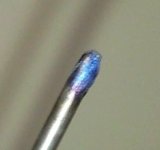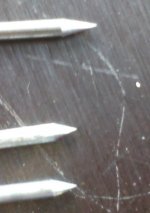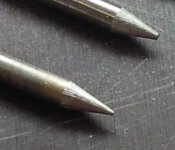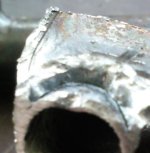madact
100 W
Just did a test tigging of a couple of pieces of tube. Semi-destructive testing shows it to be plenty strong, and penetration was OK, but I did get a bit of burn-through and warping, and it's a bit bodgy looking, I was wondering if anyone had some advice on technique (apart from not rushing, this was somewhat rushed...) - welder settings, procedure etc. etc.
In particular, do I have the polarity the right way around for this work piece & electrode (I've read about arc shape and heat / penetration being affected, but don't have the experience to know exactly how that applies here), and should I be using pulsed DC (if so, what settings should I try)...
Setup:
- T-joint, 12.7mm x 0.8mm tube (1/2" tube, 1/32" wall) galvanisation stripped with hydrochloric
- Electrode: 1.2mm lanthanated tungsten - point could have been finer :?
- Filler wire: 1.6mm ER70S6
- Shielding: Argon, 10 l / min, gas lens (#6 tip)
- Electrode negative / work piece positive
- 35A DC (not pulsed)
- Welded in four sections (edge, edge, side, side)
Photos:
View attachment 2
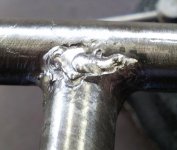
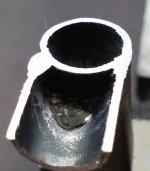
In particular, do I have the polarity the right way around for this work piece & electrode (I've read about arc shape and heat / penetration being affected, but don't have the experience to know exactly how that applies here), and should I be using pulsed DC (if so, what settings should I try)...
Setup:
- T-joint, 12.7mm x 0.8mm tube (1/2" tube, 1/32" wall) galvanisation stripped with hydrochloric
- Electrode: 1.2mm lanthanated tungsten - point could have been finer :?
- Filler wire: 1.6mm ER70S6
- Shielding: Argon, 10 l / min, gas lens (#6 tip)
- Electrode negative / work piece positive
- 35A DC (not pulsed)
- Welded in four sections (edge, edge, side, side)
Photos:
View attachment 2




